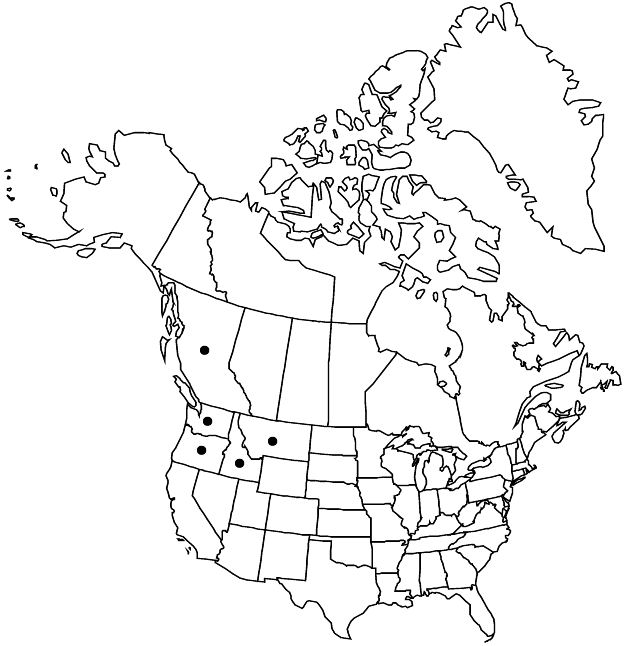Difference between revisions of "Spiraea ×pyramidata"
Pittonia 2: 221. 1892.
imported>Volume Importer |
GeoffLevin (talk | contribs) m (Corrected authority to match printed version) |
||
| Line 1: | Line 1: | ||
{{Treatment/ID | {{Treatment/ID | ||
|accepted_name=Spiraea ×pyramidata | |accepted_name=Spiraea ×pyramidata | ||
| − | |accepted_authority= | + | |accepted_authority=Greene |
|publications={{Treatment/Publication | |publications={{Treatment/Publication | ||
|title=Pittonia | |title=Pittonia | ||
| Line 47: | Line 47: | ||
-->{{#Taxon: | -->{{#Taxon: | ||
name=Spiraea ×pyramidata | name=Spiraea ×pyramidata | ||
| − | |authority= | + | |authority=Greene |
|rank=species | |rank=species | ||
|parent rank=genus | |parent rank=genus | ||
Latest revision as of 14:08, 30 November 2021
Shrubs, 3–15 dm. Stems erect to spreading, branched. Leaves: petiole 2–5 mm; blade elliptic to obovate, 2–6(–9) × 0.5–4 cm, chartaceous, base cuneate, margins doubly serrate distally from middle, venation pinnate craspedodromous, secondary veins prominent, apex acute to obtuse, abaxial surface puberulent to pubescent, adaxial glabrous. Inflorescences mostly terminal, hemispheric to obconic panicles, 5–15 × 3–10 cm height 1–1.5 times diam.; branches pubescent. Pedicels 1–3 mm, pubescent. Flowers 2–4 mm diam.; hypanthia hemispheric, 1 mm, abaxial surface tomentose, adaxial pubescent; sepals ovate, 1.5–2.5 mm; petals white to pink, ovate to obovate, 1.5–2.5 mm; staminodes 10–15; stamens 20–30, 2 times petal length. Follicles oblanceoloid, 1.5–2 mm, shiny, glabrous. 2n = 36.
Phenology: Flowering May–Jul; fruiting Jun–Nov.
Habitat: Disturbed sites, riparian zones, flood plains, scree slopes, dry canyon slopes, moist open forest and woodland edges, clearings, roadsides, railways, campsites, home or farm sites
Elevation: 200–1500 m
Distribution

B.C., Idaho, Mont., Oreg., Wash.
Discussion
Examining morphological characters of the leaf and flower, tests of pollen viability, cytological study of chromosomes, cultivation studies of seeds, cuttings, and live plants, assessment of pollinators, and controlled hybrid experiments led W. J. Hess (1969) to conclude that Spiraea ×pyramidata is a natural hybrid of S. douglasii var. menziesii and S. lucida. Hess found also that populations of S. ×pyramidata in Washington are more distinct and no introgression appeared to occur from the parental taxa; populations in British Columbia were less distinct and had more mixed populations with hybrids, parents, and probable introgressants. Hess determined that S. ×pyramidata is particularly adapted to colonization of open disturbed sites such as roadsides, railways, forest camps, and homesteads that occur in proximity to both parents. Once established, the hybrid spreads extensively by rhizomes.